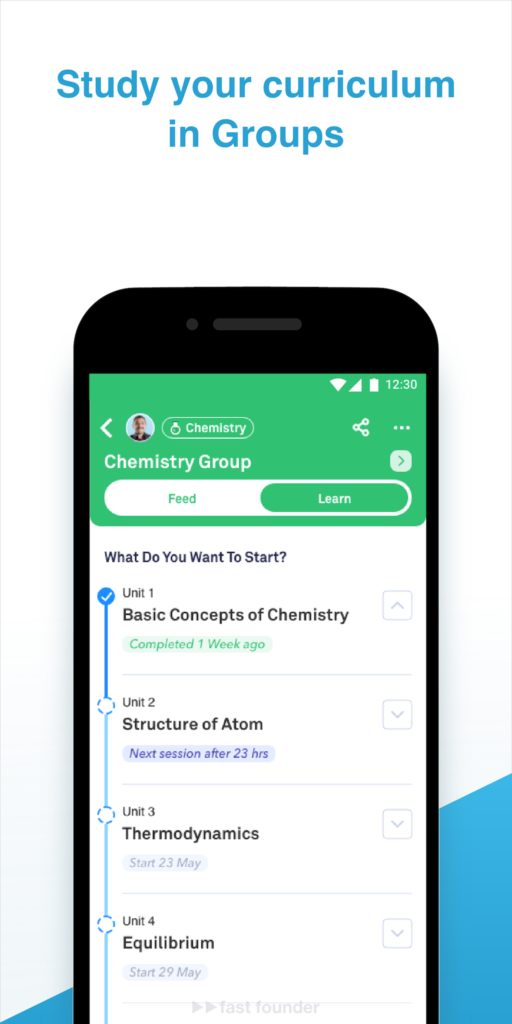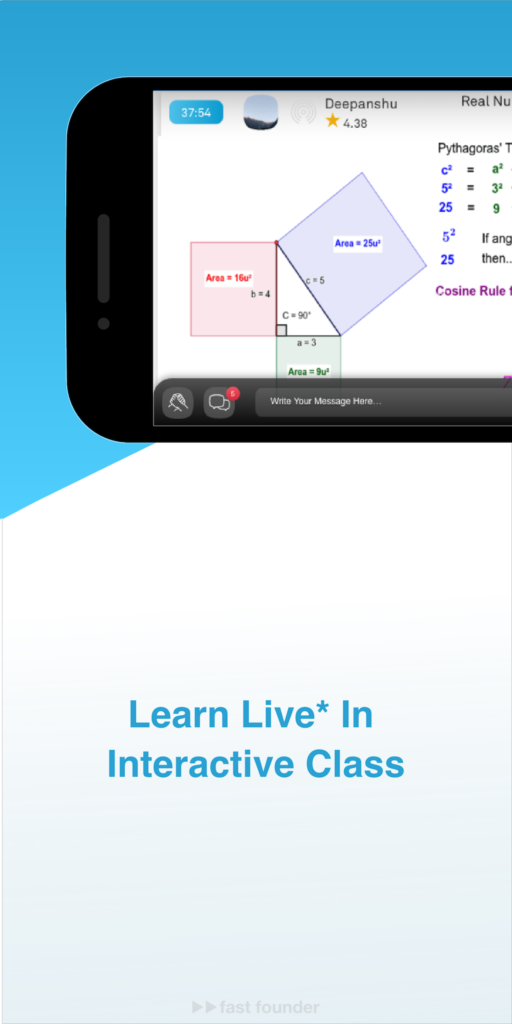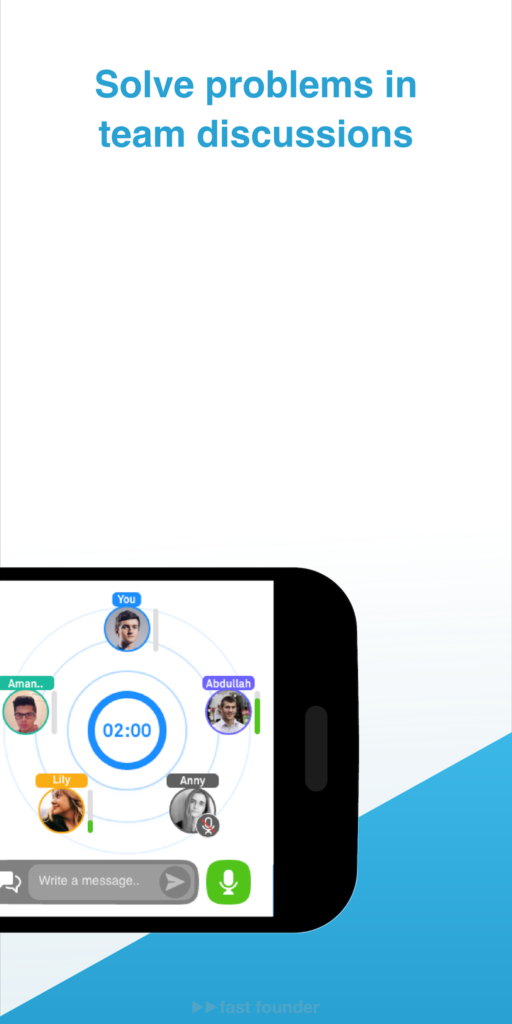The largest markets for educational platforms right now are developing countries. This startup, for example, has already attracted 12 million students but aims to reach 190 million, and that’s just within four countries. Its approach can already be replicated. However, what’s even more intriguing is how it plans to implement AI into group learning—because that’s a separate subject with excellent prospects.
The essence of the project

Noon is an educational online service for school students, which calls itself a “social educational platform,” akin to a social network.

The general idea of the service is “Stop studying alone. Gather friends who want or need to learn the same thing as you, and find the best teacher for that subject.”

Lessons for each subject are conducted for groups of students formed in this manner.

Of course, any lesson starts with an explanation and presentation of the topic being studied.

However, to truly learn something, it’s not enough to just hear about it — the topic must be “touched” and mastered. To this end, during the lesson, teachers assign tasks that the students must discuss in a group and answer. Each task is given only a couple of minutes, but since the group usually consists of about 5 people, everyone gets a chance to participate in the discussion.

Learning continues between lessons as well. In the Noon app, there is a feed of posts and discussions, just like in a regular social network. Here, students can ask each other questions about the subject they are studying, which arise in the process of doing homework or while revising the learned material. Other students can respond to these questions and vote for the most interesting ones, which then move closer to the top of the feed.

The website states that it is possible to register and study on the service for free. However, only some pre-recorded lessons and basic service functionality are available for free.

Noon’s business model is a marketplace where teachers sell their courses to students. More precisely, students look for teachers from whom they want to purchase courses in the subjects they need. The service earns money by taking a commission from the payments made to teachers through the marketplace.

The platform has 12 million registered students and 100,000 teachers.

Its main markets are India, Egypt, Saudi Arabia, Pakistan, and Iraq.
In the latest funding round, Noon raised $42 million in investments, which was a significant leap compared to the $21 million collected in the previous three rounds.
What’s interesting
Group learning is usually much more effective than studying alone:
There are fewer reasons to skip lessons. With self-study, there’s always a reason to postpone the next lesson until later, and then possibly never come back to it.
In a group, no one wants to look foolish compared to the rest, which acts as an additional incentive to learn.
It’s often easier to ask a peer a question than a teacher. And by explaining something to others, you start to understand it better yourself.
Socialization is a necessity for many, while learning is a burden. By “dissolving” learning in socialization, the weight of the learning burden can be reduced
😉 All of the above is especially true for children, teenagers, and young people, who lack a sense of responsibility and the ability to strive for long-term goals due to their age. Although this is also important for many adults 😉
Moreover, group learning usually turns out to be cheaper per student than individual lessons. This can be the first clear incentive that makes students and their parents form groups willing to learn. And all other benefits will begin to unfold during the learning process.
Thus, group learning can become a popular learning mechanism in emerging markets, where most of the population is not well-off — but the desire to learn in order to jump to another level of life is clearly present.

In addition, the number of children and adolescents in developing countries is much larger than in developed ones. Noon, with its impressive 12 million students, aims to reach a potential market of 190 million students just in Saudi Arabia, Iraq, Egypt, and Pakistan.
This means that there are other regions where the same model could take off — such as Africa, Southeast Asia, and Latin America.

Noon’s current $42 million round was raised in part on the promise that they will implement AI into their platform. This is probably the only topic for which investments are readily given nowadays 😉
And this immediately raises a very interesting question — how exactly does Noon plan to combine AI technologies with group learning?
The problem is that most AI educational projects are aimed at improving the efficiency of independent learning — where AI acts as a teacher, explaining the material, or as an assistant for completing individual assignments.

For example, take the startup Sizzle, which I wrote about in August — it created an application that suggests steps for a student to complete homework. For this, it raised 7.5 million dollars in investments in the very first round.

Another example is the startup Gizmo. It created an AI assistant that generates flashcards for memorizing terms and concepts of the subject being studied. It also raised its first investments of 3.5 million dollars.

There is, however, a “learn with friends” feature — but it boils down to the fact that you can share your sets of flashcards with friends. However, this is not at all a real group learning mechanic.
Real group learning mechanics should include students working together to solve problems and helping each other in the form of explanations and answering questions. Thus, other students play the role of a “group intelligence” here, helping you learn. And where artificial intelligence fits into this scheme is not very clear at first glance.
Although potential opportunities are seen here. AI can generate tests and assignments specifically designed for group work. AI can act as a facilitator of group discussions, nudging the discussions of group members in the right direction. AI can answer questions that other students have not answered or have answered incorrectly.
In general, the topic of using AI in group learning is interesting — but still unexplored 😉
Where to run The first direction of movement is the creation of platforms for group learning in the image and likeness of Noon for emerging markets.
These markets are huge, and the demand for quality education is becoming increasingly sought-after. Therefore, implementing a model that has proven its viability with 100,000 teachers and 12 million students seems not only promising but also feasible.
The second direction is the creation of AI platforms tailored for group learning.
This can include not only teaching school subjects to schoolchildren but also training adults in professional skills and abilities. The main thing is to find and test such AI applications that would not destroy the essence and charm of group learning but could further enhance its effectiveness.
This is a task for those who want to think and experiment. But the prospects for this direction are also good because group learning is the most effective tool for mass education. And no online platform or AI can negate this fact 😉
